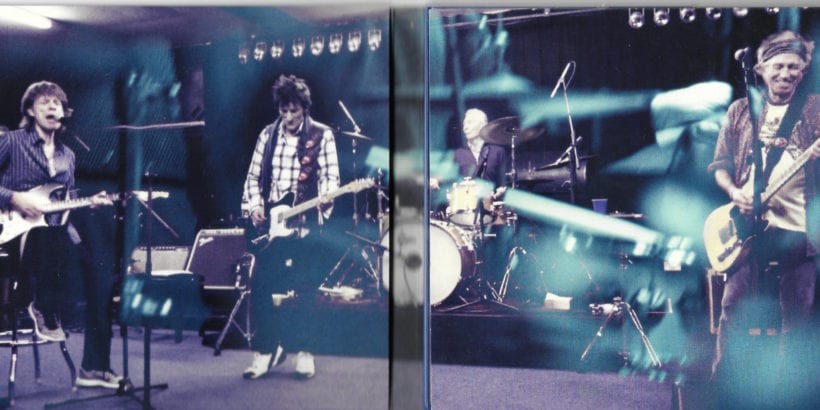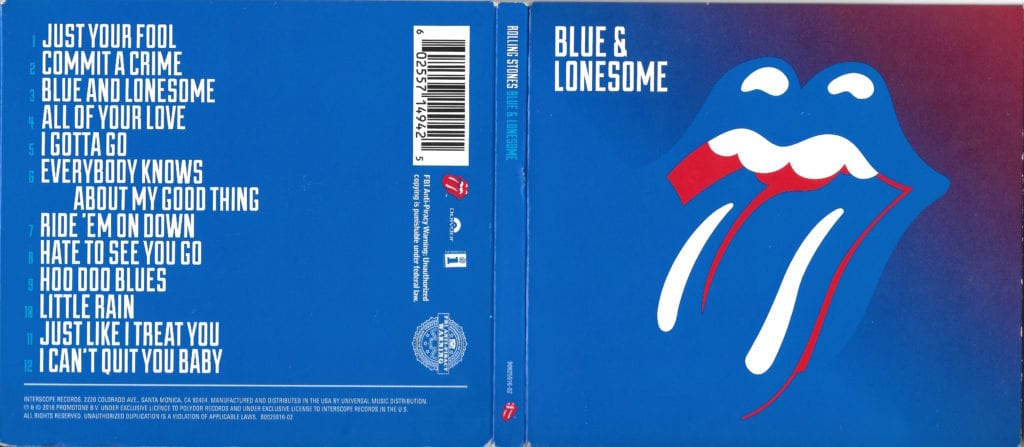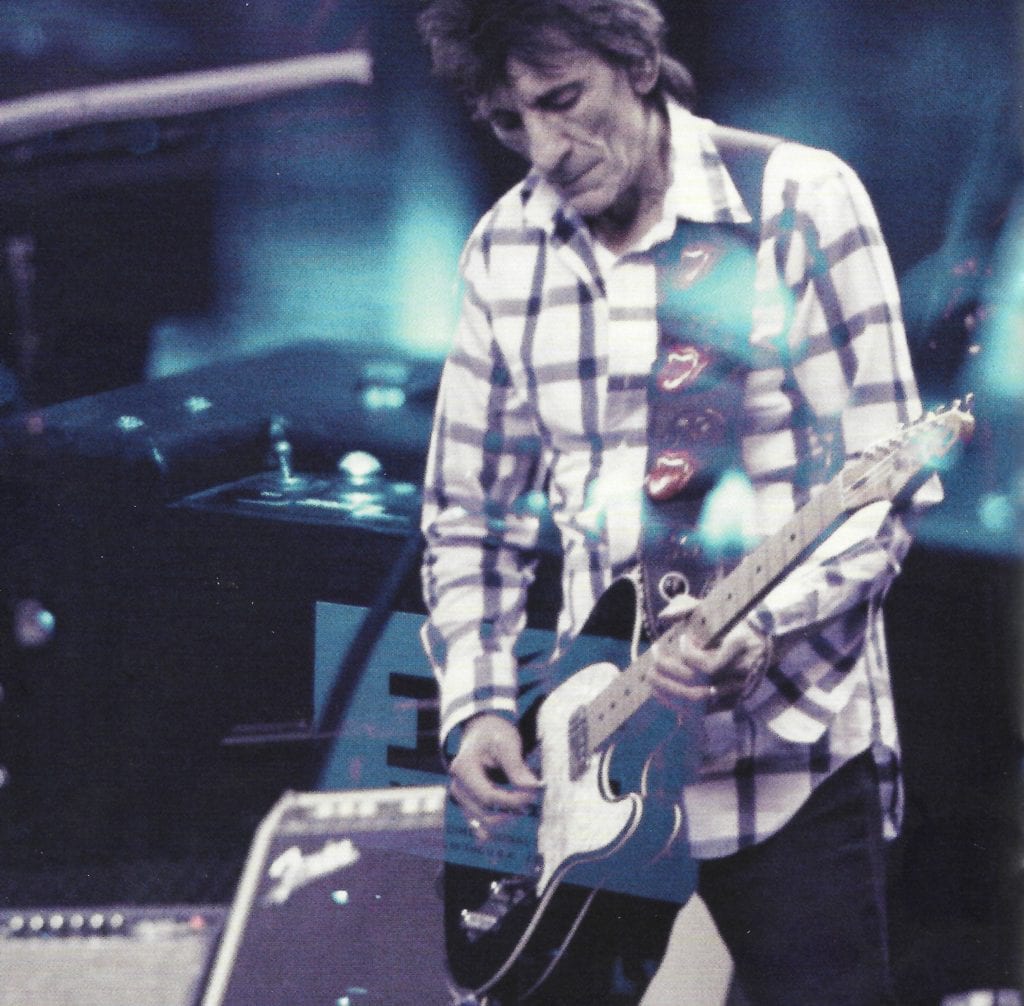
A Different Perspective on The Rolling Stones’ “Blue and Lonesome”
Your best memories of the Rolling Stones likely come from the first songs and albums of theirs that you remember. There was an incredible string of five albums in five years, starting in 1968 with Beggar’s Banquet, and a release each of the next four years: Let It Bleed, Get Yer Ya-Ya’s Out, Sticky Fingers and Exile On Main Street. Those who grew up and discovered them after 1972 still mostly revert to one or more of those five blockbuster releases.
For some who grew up with the British Invasion, however, those memories took a different form. Some loved the Beatles, others the Stones. Of course you could love them both, and we did, but we certainly had favorites. And for those of us of the decidedly vanilla variety, the early albums by the Beatles, Stones and Animals were typically the first places we encountered soul music, R’n’B, and the blues.

The first four albums I ever purchased were the first four U.S. releases by the Stones: England’s Newest Hitmakers, 12 x 5, Now and Out of Our Heads. That’s how I fell in love with “You Can’t Catch Me” (Chuck Berry), “Little Red Rooster” (Howlin’ Wolf), “I Just Want to Make Love to You” (Muddy Waters), and a score more black artists we were only just discovering on black radio stations.
I was so excited to learn — eventually — that another favorite written by the Stones, “2120 South Michigan Avenue,” was actually the address of Chess Records in Chicago (check out the movie Cadillac Records, regardless of historical inaccuracies). To this day, my favorite album of theirs is Rolling Stones Now.

Which is why I view the band’s recent release, Blue and Lonesome, so personally. It is as if the band has gone home to its deep original roots. In addition to a dozen superb tracks, the liner notes alone are worth the price of admission — for me.
Richard Havers’ notes, interspersed with quotes from the band members, set up the genesis of this album, both from 50+ years ago and from the December 2015 recording date. Here was the birth process:
This was not a record the band had planned on making. According to (producer Don) Was, “We were recording some new songs, and we just hit a wall on this one particular track. We needed to ‘cleanse the palate,’ and the ginger for the palate came about when Keith said, ‘Let’s play “Blue and Lonesome.”’ Thankfully, Krish Sharma, who recorded the album, kicked it into record, and what you hear is this one and only take of the song.”
I’m not sure if the Stones had recorded a Little Walter composition back in the day, but they certainly used to play them, and “Blue and Lonesome” opened the musical floodgates 12.11.15 (11.12.15 for the Brits). They recorded two more Little Walter tunes, then a pair by Howlin’ Wolf. Three days later, they returned to knock out another half-dozen songs; the last track was recorded the next day.

Darryl Jones plays bass and Matt Clifford keyboards on all 12 tunes. The Stones’ musical director, Chuck Leavell, also plays keyboards on ten of the 12. Jim Keltner added percussion on the last day, and there was a special guest on 12.14.15. Keith Richards and Ronnie Wood play guitars, of course, with Charlie Watts on the skins. The true delight is hearing Mick Jagger on the harp… and singing, of course.
And this note from Mick: “We’ve never done an album like this before; even our first album had overdubs. And Keith offers: “When we started playing in London in 1962, we started off with Chicago blues. If you wanted stardom and fame, then that was not the way to go.”
Several general notes before we go track by track. These twelve songs hew so closely to the originals; Mick, Keith, Ronnie, Charlie and company are presenting these as homages. There is no fancy 21st-century updating. Charlie and Darryl Jones, for instance, are in perfect lockstep in that blues tradition: just the blues facts. For the most part, the keyboards are in the background, except as noted below. And I wish I could tell you whether it is Keith or Ronnie on a solo, but…
In our Spotify playlist below, each track from Blue and Lonesome is followed by the original recording for your listening enjoyment.

Mick jumps in immediately on “Just Your Fool,” the first track and a Little Walter tune, the harp spot on. This is a bouncy shuffle blues, Charlie’s drums adding perfect punctuation throughout. Little Walter was the composer for all four of his tunes The Stones play on this album. Next up is a slammin’ Howlin’ Wolf tune, “Commit a Crime.” Mick sings this one the way he sang “Little Red Rooster,” as wicked and gritty as he can make it.
https://www.youtube.com/watch?v=U0WhDACKlGk
The next two songs are equally down and dirty, with the title track first, another Little Walter song. The Magic Sam song that follows, “All of Your Love,” is one of those deep, deep blues tunes with Mick begging. Here Leavell’s piano recalls those great 88s that Ian Stewart and Jack Nitzsche added on those first Stones albums.
Mick’s harp is all over the album, thankfully, perfect on Little Walter’s “I Gotta Go,” another uptempo shuffle blues. Then everything slows down for a catchy Little Johnny Taylor song from 1971 (seven of the album’s songs were originally recorded from 1955 to 1959, four others from 1960 to 1967). Sample:
“I was talking to my neighbor
About the way you wear your hair.
He said you must have a lot of children
‘Cause the milkman’s always there”
This track was one of six recorded on 12.14.15. Eric Clapton happened to be in the next studio, and he was invited to sit in on two songs, here offering some sweet slide guitar and a nice solo.
Two more fine uptempo shuffles follow: “Ride ’Em On Down,” by Eddie Taylor, and the last of the Little Walter tunes, “Hate to See You Go.” Charlie plays that double-time triplet shuffle blues lick (a crescendo) in “Ride ’Em On Down” that always electrifies me at a blues show. And clearly Mick loved Little Walter’s songs, vocals and harp playing.
The music hits the brakes again for Lightnin’ Slim’s “Hoo Doo Blues,” the only tune recorded on the last day (12.15.15). The mood gets quieter still for “Little Rain” by Jimmy Reed, where the rhythm section is at most an accent, the song propelled by harp and guitar.
The second Howlin’ Wolf song is one of those really uptempo shuffles, “Just Like I Treat You,” this one written by blues master Willie Dixon. Leavell is once again all up in it with his piano, and Mick is having a ball.
Chances are you might never have heard any of the first eleven tunes here, but for certain you know the last one, another Dixon composition from a 1956 Otis Rush recording, “I Can’t Quit You Baby.” This time Matt Clifford is heard prominently on Wurlitzer piano, and Eric Clapton is again superb, reminding you perhaps of his work with John Mayall’s Bluesbreakers (the Beano album).

If you were looking for a “Satisfaction” or “Gimme Shelter” or “Start Me Up,” look elsewhere. This album clarifies why they wrote “2120 South Michigan Avenue.” And Mick and Keith get the last word.
Mick: “All these songs have antecedents. We’re paying our respects, but we’re taking the blues forward and hopefully introducing them to a whole new generation of fans.”
Keith: “If you don’t know the blues, there’s no point in picking up the guitar and playing rock and roll or any other form of popular music.”
